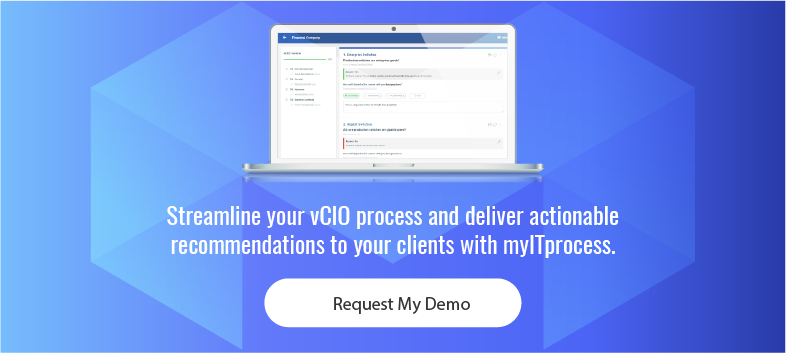No doubt about it, the number of MSP software tools are increasing and so are their
costs. Let’s dig a little deeper into this by explaining new ways to evaluate tools, including their costs, effectiveness and results.
First, you’ll want to take inventory of your current toolset. Identify how many tools you deploy across all of your customers and what tools are only deployed to some
customers.
You can then determine the effectiveness of each tool by asking yourself these
questions:
- Are each of your tools doing what they are intended to do?
- Do you have metrics or other instrumentation to verify results?
- Could the results be achieved in a more effective way?
In my experience, you may not like the answers to the questions above or the lack of
answers. Most MSP’s buy tools that either never reach their full optimization or their
results drift over time. Even more reason to evaluate your current tool stack to look for gaps and focus on new tools to fill those gaps!
Are there opportunities for new tools in your stack?
After evaluating your current tool stack, you can determine if there are gaps or
opportunities to increase efficiencies, lower risk and add value to your offering.
Some general guidelines to follow when evaluating a tool are as follows:
- Will the new tool lower your cost per seat by reducing labor in one of the other delivery areas? Will it reduce tickets and time on reactive tickets so your support resources can manage more seats and lower your cost per seat? Will vCIO’s, Technology Alignment engineers, or Centralized Services be able to manage more customers and seats, therefore reducing cost per seat?
- Will the tool increase value? Can you translate the result of the tool and that value to customers and prospects in a way they can understand so that you can command a higher seat price and increase separation in the sales process?
- Does the tool lower risk, either yours or your customers? If so, can you translate that reduced risk into value or higher price?
- Can the tool generate additional revenue? This could be MRR or non-recurring services opportunities.
- Do you have the capacity and expertise to implement and manage the tool properly?
What you should know about the numbers
When it comes to the numbers, remember this: Every $1.00 of tool cost increase
requires a $3.33 seat price increase in order to maintain 70% gross margins. So, if there is no off-set labor in other areas and you add a security tool for $3.00 a seat, you need to raise your seat price by $10.00 or your margins go down quickly.
We think about all of this when we’re designing our software, myITprocess. Our
customers have reduced reactive tickets and time by as much as 75% and it’s not
uncommon that they reduce reactive noise by 25-50% in the first year. We always
preach that to be a top-performing MSP, your support costs need to be under $10.00 a seat. Which means each of your support resources needs to manage at least 400-500 seats.
We want to ensure that vCIO’s can manage more accounts, which lowers your vCIO
cost per seat and that customers take more recommendations to generate more MRR
and NRR from accounts. Finally, having a defined and documented process for
alignment and vCIO allows you to command a higher price and create more separation in the sales process.
Other considerations
Let’s go people! We want to move every key driver of profitability in the right direction. Ask yourself as you look at every tool if that is the case. Be sure your leveraging your current tools and that you understand the guidelines for cost and price I mentioned earlier. If you’re changing tools, be sure you are also considering the switching costs.
All of our MSP’s have seen tool costs rise over the past few years. Tools are now a larger percentage of your seat cost. This means that understanding cost effectiveness and results is way more critical to your success.


